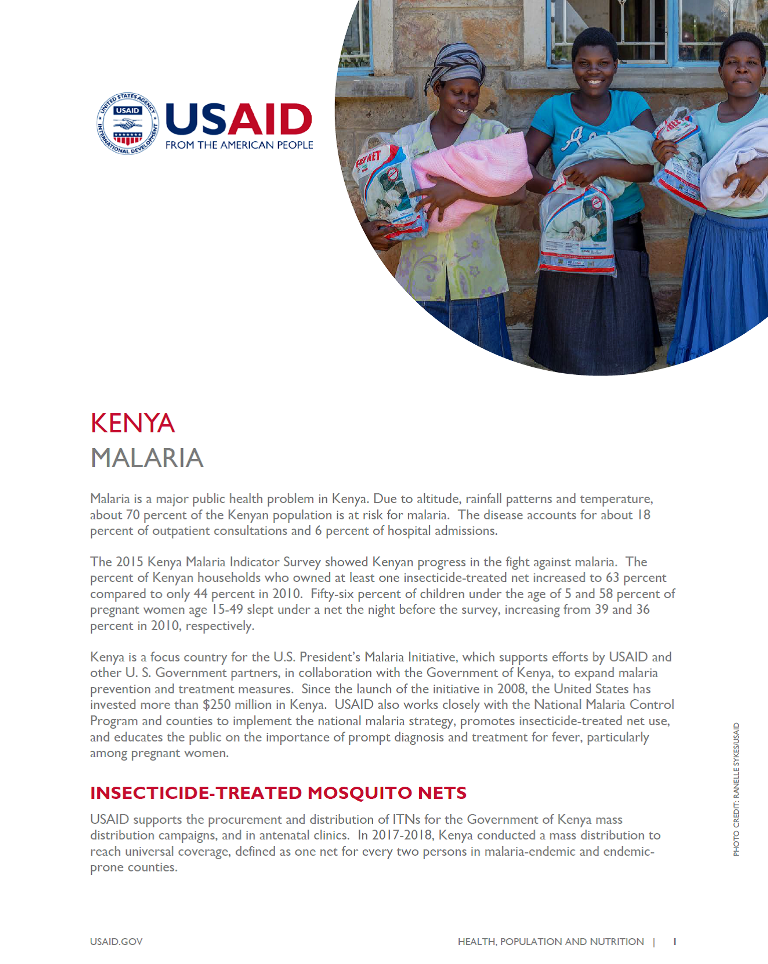Speeches Shim
Malaria is a major public health problem in Kenya. Due to altitude, rainfall patterns and temperature, about 70 percent of the Kenyan population is at risk for malaria. The disease accounts for about 18 percent of outpatient consultations and 6 percent of hospital admissions.
The 2015 Kenya Malaria Indicator Survey showed Kenyan progress in the fight against malaria. The percent of Kenyan households who owned at least one insecticide-treated net increased to 63 percent compared to only 44 percent in 2010. Fifty-six percent of children under the age of 5 and 58 percent of pregnant women age 15-49 slept under a net the night before the survey, increasing from 39 and 36 percent in 2010, respectively.
Kenya is a focus country for the U.S. President’s Malaria Initiative, which supports efforts by USAID and other U.S. Government partners, in collaboration with the Government of Kenya, to expand malaria prevention and treatment measures. Since the launch of the initiative in 2008, the United States has invested more than $250 million in Kenya.
USAID also works closely with the National Malaria Control Program and counties to implement the national malaria strategy, promotes insecticide-treated net use, and educates the public on the importance of prompt diagnosis and treatment for fever, particularly among pregnant women.


Comment
Make a general inquiry or suggest an improvement.